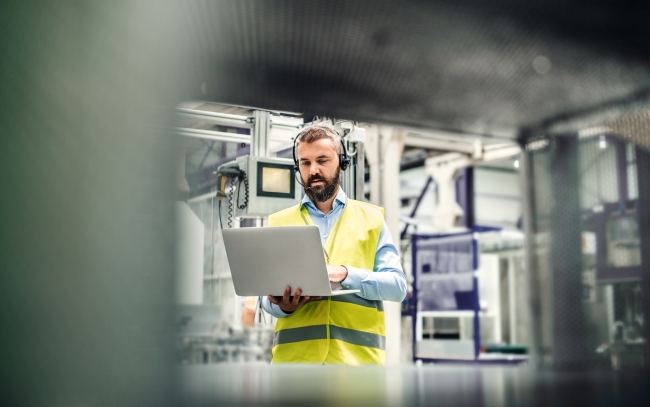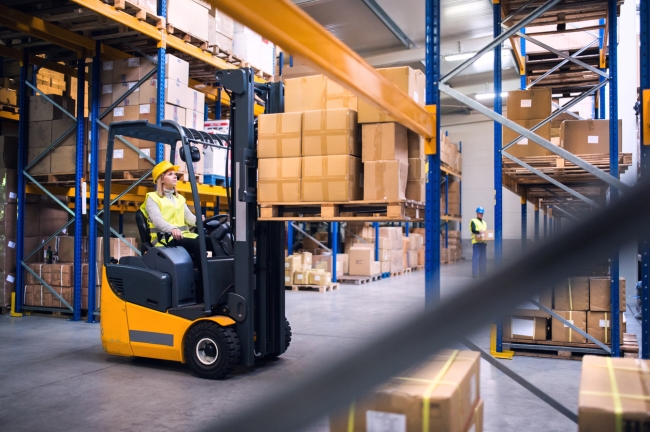5 minute read • published in partnership with Hitachi Vantara
Insight: Maximise health and safety as we head back to work and commuting
The COVID-19 pandemic has taken a terrible toll on people, society and the global economy. Now, as organizations plan to reopen, they are committed to keeping their employees, passengers and customers safe while mitigating the risk of spreading infections. To complement an on-demand webinar, Hitachi Vantara looks at how to proactively prepare for reopening facilities by implementing technology and data-driven policies.
The pandemic exposed the systemic risks and fragility inherent in businesses across every industry. As organizations have been forced to take rapid action to respond to historic disruptions, the digitalization of the economy has accelerated. Digital technologies and data-driven policies will be essential to preparing for the challenges ahead as businesses reopen and adapt to new ways of operating.
During this transition, it is critical to communicate often, clearly and with full transparency to your employees, suppliers, customers and community. Keep stakeholders informed about your efforts to support them through these changes and to provide a safe environment. At the same time, you’ll need to maintain compliance with government and industry guidelines and have the data to report your efforts to regulators. In this best practices guide, we present guidance and strategies to help you achieve those goals.

Manufacturers must proactively prepare for reopening facilities by implementing technology and data-driven policies / Picture: Getty/iStock
Mitigate Risks with the Right Technologies and Data-Driven Strategies
1 – Start by asking the right questions, then move to mitigate risk with technologies and data-driven policies
2 – Seek solutions that can scale but are not labor intensive or intrusive
3 – Continue to respect the privacy of your workforce
4 – Be transparent with your workforce and regulators
5 – Automate detection of social distancing, handwashing, accidents and safety compliance
1 – First ask the right questions, then apply technology and data-driven policies to mitigate risk
Technology alone is not enough to minimize the impact of COVID-19 or any other health and safety challenge across an organization. Organizations need to ask the right questions to fully understand how outbreaks and incidents could potentially impact their people and business processes. Consider how you can best protect your organization before, during and after an outbreak or incident. With these insights, you’ll be able to move forward to develop data-driven policies and deploy the right technology to best mitigate risks that are specific to your operations.
Communicating clearly, engaging stakeholders and seeking expert advice on best practices are essential as you work to shape and implement these new policies. Make sure everyone in your business ecosystem understands what the new technologies and policies are and how they work. Address any privacy concerns and assure your people that you are committed to protecting them and their families. Establishing confidence will help you set the tone for a successful path forward.
Any efforts to reduce risk must start with a strategy that not only determines how COVID-19 will be dealt with, but how the risk-reduction strategy aligns with the broader goals of the organization. Point solutions abound in today’s world, but end-to-end solutions that are aligned with end-to-end strategies will separate companies that thrive in the coming years from those that falter and are left behind.
2 – Seek out solutions that can scale but are not labor intensive or intrusive
Basic policies around handwashing, social distancing and measuring body temperature must be both implemented and monitored to be effective. Alerting for elevated body temperatures has become a first line of defense against COVID-19. However, using hand-held infrared thermometers at close range can put testers at risk. Technologies such as forward-looking infrared (FLIR) cameras can detect a person’s temperature from a distance for nonintrusive screening at scale. You can then execute policies, such as isolating those with elevated temperatures for testing with a medical thermometer. Also, 3D lidar can automatically monitor social distancing for wide areas and small rooms to ensure safety across all facilities. Look for solutions like these that are not labor intensive or intrusive and provide a layer of defense without adding risk.
3 – Your employees value their privacy. Continue to respect it even in times of crisis
How can you collect essential data without compromising personal information? By combining artificial intelligence analytics with advanced monitoring technologies, you can gain insights into behavior without exposing or collecting personally identifiable information (PII). For example, correct handwashing has been identified as one of the most effective ways of preventing the spread of this virus. 3D lidar technologies use computer vision and machine learning, and can automatically monitor handwashing behavior. Because 3D lidar does not capture PII, you can effectively monitor workforce behavior anonymously, and establish a feedback loop that helps employees use safer practices.
Be sure to communicate with your workers about how these new technologies work, and address any privacy concerns. This will help improve employee confidence in the workplace during these very stressful times.

Basic policies around handwashing, social distancing and measuring body temperature must be both implemented and monitored to be effective / Picture: Getty/iStock
4 – Be fully open and transparent with your workforce and regulators
Your employees and others in your business ecosystem must understand your health and safety policies and actively participate in putting them to use. Full transparency is fundamental to building trust in the workplace and maintaining regulatory compliance. Transparency helps everyone in your ecosystem understand that you’re doing everything you can to keep the workplace safe.
Be clear about what the company is doing. Rich analytics can empower you and your management to understand what’s happening in your factory, transportation facilities or retail business — and provide detailed information you can share with employees, customers and regulatory officials. At the same time, you can avoid potential regulatory issues and fines, and help insurance companies, shareholders and others be fully confident in the actions that you are taking.
5 – Automate detection of social distancing, handwashing, accidents and safety compliance
With automation, you can extend, monitor and enforce safety policies and procedures. For example, 3D lidar can be used to send an alert if someone slips or falls, allowing you to respond quickly. It can also be trained to perform social distancing analysis without capturing PII. If distances between people become unsafe, real-time alerts and analytics can help managers better design workspaces or target education in accordance with organizational policies. Automated detection of personal protective equipment (PPE) can also help improve compliance, while contact tracing using 3D lidar and/or bluetooth sensors can assist in targeted testing and quarantine if a confirmed or suspected case emerges.
Your organization can combine this data with existing data to identify trends and potential high-risk areas for immediate remediation as well as long-term space planning and layout design. Automation extends human capability to make everyone more proactive and effective, so you can improve the efficiency of operations and provide a safer overall experience.
Choose solutions that point the way forward
By implementing these best practices, you can gain rich insights from both the physical and digital worlds to build a safer and more operationally effective organization. But this has to be part of a holistic, long-term approach to ensure worker health and safety in other areas of the operation. Hitachi provides strategic risk consulting as well as solutions to reduce human/machine collisions, detect slips and falls, and improve incident response and management. This technology foundation can be built upon to enhance operations and experience of workers, passengers, and customers. Put smart, scalable technologies in place today for a foundation that will enable your organization to adapt and become more competitive in the future.
Digital health and safety strategies webinar
Hear from RPG Group, JR Automation, Intel and Hitachi in an interactive discussion to help get up to speed on the latest technologies to assist in worker health and safety, as well as lessons from the shop floor and other smart spaces as they cover best practices for the new normal enabled by innovative technologies and deep expertise – the recording of the webinar is available on-demand via the link below
CLICK HERE WATCH THE RECORDING